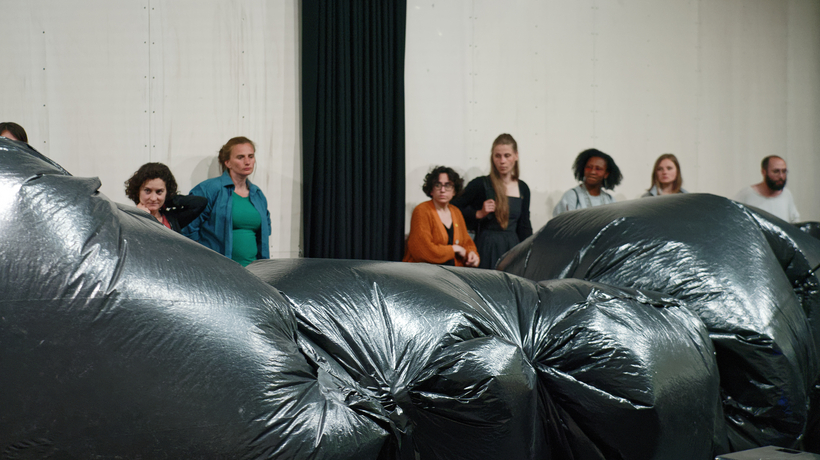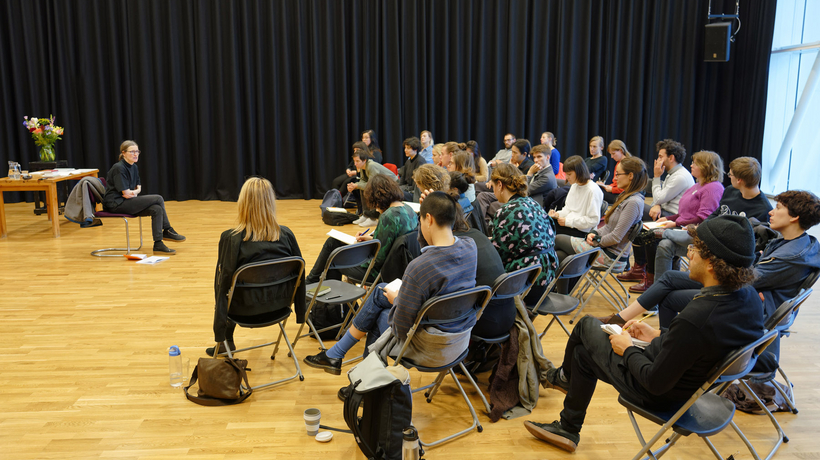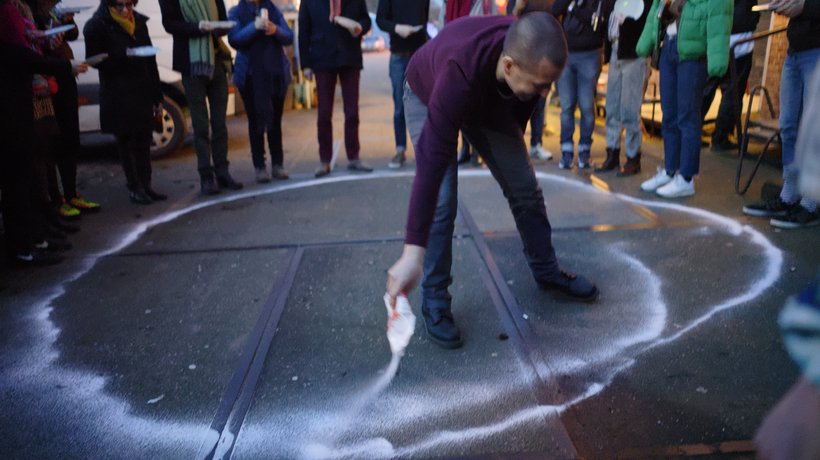Educational Vision and Dramaturgy of Learning
DAS Theatre gives detailed attention to think how we, as a school, can become a space of complexity, as opposed to simplification. How can we engage imaginatively with the philosophical, social and political issues that confront us? How can art and education formulate hypotheses about our present and future entanglements?
Our dramaturgy of learning is structured around a series of educational principles and values. They form the foundation of what the programme offers and expects.
Ownership and Togetherness
Participants are expected to take responsibility for their own learning process, through formulating artistic questions, by showing a capacity for self-organization and by initiating both individual and collective activities.
In response to an artistic field ruled by temporality and individuality, we see the school as a place concerned with people, ideas and forms of togetherness. Individual trajectories benefit from a community of peers, tutors and advisors, and a broad international network.
Significant Encounters
The study program is built on encounters and exchanges with peers and guests. Participants engage critically with artistic and curatorial practices that may be radically different from their own, which serves the purpose of feeding their work and reinforcing their artistic position. International guests fuel a permeable curriculum, while thematic blocks bring intensive educational programmes around relevant topics for the theatre field. For these encounters to become significant, we have invested in modes of reflection and implemented continuous tutoring and coaching.
Research-Based Artistic Practice
DAS Theatre’s curriculum backbone is formed by varying sequences of input-process-work-reflection. Input, process and work are resources for reflection as well as the sediment of these reflections. This interconnective looping enables artistic research to become more precise and profound.
Along the two-years, the curriculum provides the participants with several individual and collective elements, including studio time, sharings and feedback, to broaden and deepen their research questions and artistic practices.
Diversity of Practices and Backgrounds
DAS Theatre embraces the wide range of practices covered by the term Theatre. The program pursues an active practice of different aesthetics, tools, dramaturgical approaches and genres. The programme welcomes artists (directors, performance makers, performers, dramaturgs…) and curators who seek to expand their fields. DAS Theatre is a place where people from various cultural backgrounds question and learn from each other. We are aware of the long way to go towards diversifying the school, decolonizing, feminizing and queering it – and this is a primary commitment.
Being Part of Something Bigger
DAS Theatre cultivates and expects an open attitude towards the larger circles and environments we are part of. Within DAS Graduate School, we share curriculum elements and co-curate public events across the departments. We also seek to relate to guests, colleagues and peers from the international field, working towards a publishing platform and regular public program series. Furthermore, we collaborate with local and international art institutions, aiming to contribute to the discourse about contemporary performing arts.














